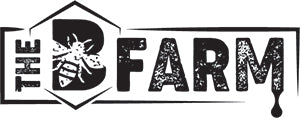Beekeeping fascinates many people due to the complex behaviors and structures within a hive. The queen bee is central to this buzzing community, a key player whose presence and actions hold the colony together. But what exactly does the queen bee do for its hive? Take some time today to learn how the queen’s presence influences her colony and improves the hive’s chance of survival.
The Queen’s Throne in the Hive
The queen bee holds a unique position at the heart of the hive. Unlike worker bees that buzz from flower to flower, the queen seldom leaves her domain. Her primary role involves reproduction, guaranteeing that the hive flourishes with new generations. She mates during her early days, storing sperm to fertilize thousands of eggs daily. This prolific production defines her as the mother of nearly every bee in the colony.
Her size sets her apart from others, and beekeepers typically identify her quickly. To find her among the bees in the hive, apiarists search for a bee with a larger abdomen and a more elongated body. Knowing the physical distinction of the queen improves the focus and attention when inspecting the hives because understanding her whereabouts is crucial to managing the hive’s health.
The Queen Bee’s Influence on Hive Dynamics
The queen bee’s pheromones play a vital role in regulating colony behavior. These chemicals influence worker bees, guiding their tasks and maintaining order. Without these pheromones, chaos ensues, and the hive disbands. Her scent acts like a communication line, ensuring everyone knows their role.
In addition to maintaining order, the queen’s pheromones signal the colony’s overall health. A strong scent indicates a thriving hive, while a weak one suggests trouble. Beekeepers monitor these signals closely, as they often hint at the need for intervention, such as requeening the hive.
Swarming and the Queen’s Pivotal Role
Swarming is a fascinating aspect of hive dynamics. It happens when the colony grows large, necessitating a split. The old queen and a group of workers leave to establish a new home. This natural process ensures the species’ survival, creating more colonies in the process.
During swarming, the hive raises new queens, ensuring continuity. These new queens compete for dominance, with the strongest taking the old queen’s place. This cycle renews the hive’s vitality and ensures genetic diversity.
The Lifespan and Legacy of the Queen Bee
The queen bee lives significantly longer than her worker counterparts, often up to five years. Her longevity contributes to the colony’s stability and productivity. However, her egg-laying rate decreases, affecting the hive’s growth. When productivity wanes, beekeepers may introduce a new queen, a practice known as requeening.
Find Queen Bees at Our Farm
What the queen bee does for its hive extends beyond reproduction. It encompasses leadership, fertility, and stability. By understanding her vital function, beekeepers can create a flourishing environment for their colonies. If you are an apiarist looking into honey queen bees for sale, stop at the B Farm. We offer healthy queens ready to begin your new hive and keep it expanding for future generations.
